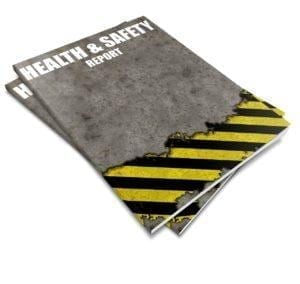We are well and truly in the age of the festival.
All over the world, successful festivals are becoming brands unto themselves. In a music industry where success is far from guaranteed, a music festival done right can be amazing for all involved.
Done wrong, it can be catastrophic.
Horror stories such as the Fyre Festival—aka “The Greatest Party Never Held“—can act as cautionary tales. In fact, we’ve already extracted valuable lessons from the Fyre Festival earlier.
So, how do you make sure your music festival is done right?
Billetto is a ticketing platform that helps you manage, promote, and host events. Set up an event page and start selling tickets in 5 minutes.
CREATE YOUR EVENT >>
1. Identify who your music festival is for
This is all a part of building a brand for your festival. Festivals aren’t usually sold on just one headliner. Instead, they’re sold as a place to discover new bands and a shared space for musicians in a similar genre or targeting the same audience.
To best understand this level of branding, work out who your audience is. Will you be targeting electronic music enthusiasts or metal fans? Your target audience will greatly influence all further decisions you make.
Take Download Festival as an example. They have had the benefit of over 15 years of history. In that time, the lineups and advertising strategies have all revolved around targeting people who like heavy music. For this reason, people buy tickets to the festival even before the lineup is announced.
There are a number of methods to narrow down your event target audience:
Surveys
You can send out surveys to your existing mailing list to find out the sort of bands they listen to, where they find gigs, and what they would like to see at your festival.
Attendee personas
Create an attendee persona profile for your “ideal” festival fan. What’s their age range? What are their interests? What music do they listen to?
Competitor research
Pay close attention to what your competitors and similar festivals are doing.
Tip: Check out this guide on identifying and attracting festival fans.
2. Decide whether indoors or outdoors is best
Organisers putting on a festival often have glamorous images of 80,000 people coming to see their headliners in a huge field. Images of Woodstock or Glastonbury come to mind. But outdoors isn’t always best. You should consider the pros and cons of indoors vs. outdoors before booking your event.
Outdoor festivals
Outdoor festivals are great, but they bring many potential pitfalls. There are unique issues to consider that come with the great outdoors. You might need to obtain or consider different equipment.

Often, the field or outdoor space you choose won’t have been designed for music events. This means that you basically need to set up your own venue in advance. All of this for the chance that you could end up being rained off.
Pros of an outdoor festival
- More space and the ability to set up multiple stages.
- More room for vendors.
- Space for people to camp if your plan is a weekend festival.
Cons of an outdoor festival
- Weather can make an impact, no matter how much you prepare.
- Equipment for an outdoor festival can be tough to source and manage.
- You need to create barriers and control ticketing to ensure nobody sneaks in.
- You won’t have the help of a venue and the venue staff.
Indoor festivals
Starting indoors means that you more will be ready in advance. Staff at the venue are used to gigs. You won’t have to set up boundaries, and security will likely be simpler. Great venues include equipment, door staff, tech staff, and more. That leaves fewer things to worry about.
Pros of an indoor festival
- You can use the facilities and contacts of the venue you choose.
- No risk of weather issues.
- Equipment will likely already be set up.
Cons of an indoor festival
- Space is more limited.
- Multiple stages become very tricky.
- Less room for other vendors and activities.
Tip: Check out our guide to planning a music event, which includes venue considerations.
3. Don’t be afraid to start small
Unless you have a huge budget, your first festival isn’t likely to be massive. Starting small is a good idea, anyway. According to Jason Carter, founder of ONE Musicfest:
Typically, when you build a festival from the ground up, it’s going to take you about five years for people to really catch on, from the acts to the sponsors to the patrons.
Festivals such as Y Not are often considered examples of those that have become “greedy.” The Guardian investigation into why festivals go bust explains more:
Y Not Festival has gone from 8,000 to 25,000 capacity in just three years, which could explain the lack of staff and the angry Facebook comments citing ‘greed’ as the main issue.
Scale slowly
This growth in capacity—over 300% in three years—is not something you should want to replicate. If you start with a 1,000–2,000 capacity to keep it manageable, an increase of 33% to 50% year on year is more sustainable.
One stage at a time
Don’t start out with multiple stages. Instead, start with one, get it right, and then scale and replicate. This can be a way to increase the capacity gradually and gain experience of how to run one stage before delegating a second.
Get the right tools
Tools like Billetto for ticketing and Festivalpro for scheduling and vendor management can let even small festivals thrive from the get-go.
Hopefully, your festival will be one that grows. However, this growth needs to be managed. Make sure you have a plan in place for extra staffing, additional musicians, and increased number of attendees. Don’t end up as one of the cautionary tales.
Tip: Here’s a good look at what it takes to gradually scale your music festival.
4. Take a business approach
People that start music festivals are usually doing so because they love music. You may not be the best businessperson, but you’ll need to learn fast. If you want your festival to be a yearly event, or you’re risking money, you need to get the business side right.

Budget
Work out the minimum possible budget you’ll need to get the festival done safely. You can follow this 9-step approach to putting together an event budget. Ignoring what you are spending or forgetting some of the expenses can mean you lose money on the festival.
Tip: Take a look at our guide on preparing and managing your event budget for more tips.
Marketing
The marketing strategy for your festival will be a natural extension of working out who your target audience is (See #1). Find out where they hang out, both online and offline, and follow our tips to market accordingly.
Tip: Our guide on promoting a music event should prove handy.
Partnerships
However confident you are, there is no need to go it alone. Building partnerships is vital to music festivals.
Getting funds
This can mean finding sponsors, which can be a huge financial help. Create a music festival sponsorship package to attract potential financial backers.
Getting help
Partnerships can also mean employing external vendors for food and drinks, partnering with security firms, sanitation companies, and more. Delegation can be expensive, but it’ll also mean a lot less for you to worry about.
Tip: For more details, check out our guide for getting event sponsors.
Health and safety
Three words to send shivers down the spine. You’ll need to consider permits, event insurance, security, and first aid.

It’s often a good idea to hire a health and safety consultant and delegate this task to people who know exactly what they’re doing.
Tip: Our guide to health and safety for events covers everything you need to know.
Billetto is a ticketing platform that helps you manage, promote, and host events. Set up an event page and start selling tickets in 5 minutes.
CREATE YOUR EVENT >>
Remember your motivation
Starting a music festival from scratch is a very tricky thing to do. But done right, it can be a viable business as well as a fun and enjoyable event.
To make sure it does go right, follow our tips, be thorough, and—most importantly—remember your motivation for planning the festival in the first place. When times get hard, this is ultimately what will keep you going.





Leave a Reply